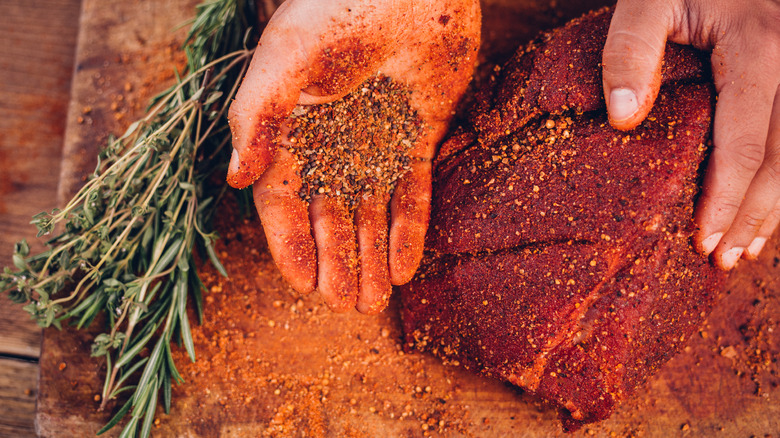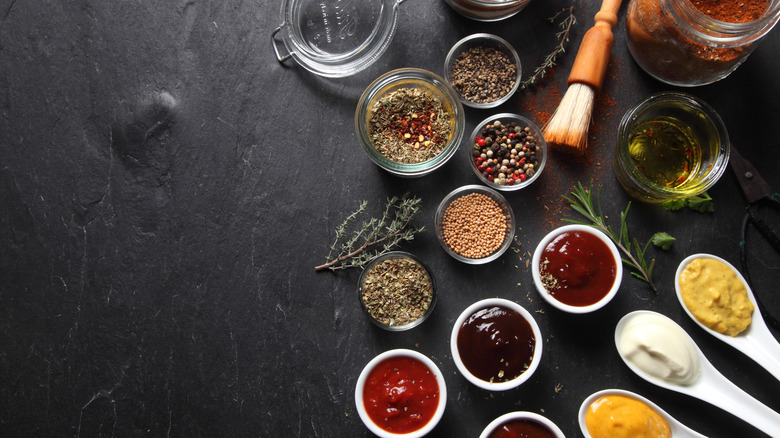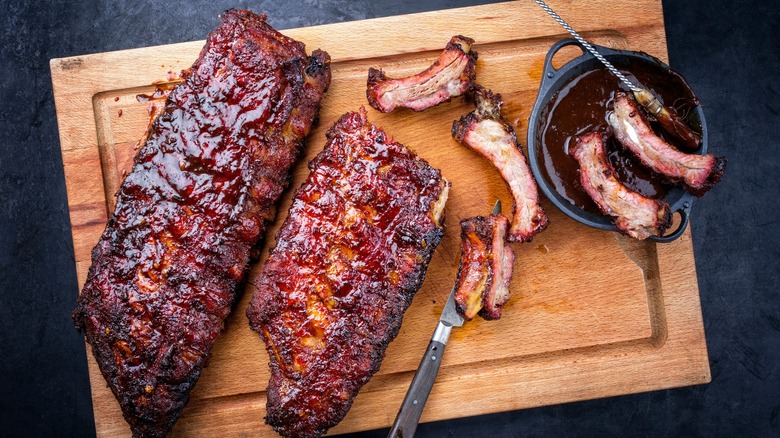When Should You Use A Wet Rub Vs A Dry Rub On Meat?
Although meat can have fantastic flavor on its own, to get the most out of that flavor you might want to hit the meat with some seasoning. Sure, a high-quality steak doesn't need much more than salt and pepper, but for other proteins, you might want to get all up in there with a wet or dry spice rub.
But what, exactly, are dry rubs and wet rubs? What are the differences between them, and when should you choose one over the other? Although you might want to season your food regardless of how you're cooking it, the preparation method can help determine whether you want to use a dry or a wet rub on meats. Dry rubs can work in pretty much all applications; wet rubs are typically used with low-and-slow cooking methods. But even if dry rubs often are more versatile, there are still plenty of reasons to experiment with wet rubs.
A dry rub and a wet rub have one key difference
It's important to first understand the differences between a dry rub and a wet rub. A dry rub isn't simply "seasoning" such as salt and pepper (although that's typically the foundation of any good dry rub), but a blend of spices, such as smoked paprika, garlic powder, onion powder, mustard powder, brown sugar, and cumin, mixed together and generously patted onto all of the surface areas of a cut of meat. Meats seasoned with a dry rub are often finished with a sauce (they don't have to be), which is added at the end of the cooking process.
A wet rub is basically a dry rub with the addition of a liquid to the mix. The theory with a wet rub is that the liquid, which can be vinegar, honey, olive oil, or even a condiment such as ketchup or mustard, makes the dry ingredients into a thick paste, which helps the seasonings adhere to the meat. This does work, but keep in mind that the addition of a liquid might change how you want to cook the meat.
Dry rubs can work for everything, but wet rubs are a little more specific
Dry rubs actually do work for pretty much anything. You can cook them on high heat or more slowly, and you're probably not going to be disappointed with the results. In particular, a dry rub is excellent if you're going for a fast, hard sear, as the spices tend to form a hard, flavorful crust, which can be incredible on something like pork loin or chicken breast. There's no real downside to trying a dry rub.
A wet rub, meanwhile, is most effective when the meat is cooked low and slow. This is particularly true if your wet rub has a decent amount of sugar in it, like in a honey-based wet rub. This is because sugars will caramelize when exposed to low heat over time. However, if you hit sugars with high heat, they'll just burn. One advantage of a wet rub is that it can be used to create crusts with unique textures and flavors.
Yes, a dry rub is probably a safer bet in general — but don't be afraid to experiment with wet rubs, too. They can bring an interesting new dimension to your meat-eating experience.


